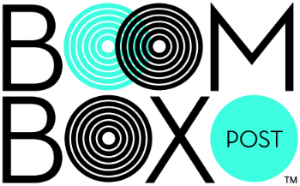We recently received a request from one of our readers:
“Can you show me how to create a fight cloud, Boom Box Post?”
Yes we can!
Fight cloud from The Loud House
If you’re reading our blog, chances are you’ve seen a cartoon or two. You’re most likely familiar with the classic “fight cloud” or “big ball of violence.” This gag has been a staple of comic strips and animated cartoons dating all the way back the 1930s. Fight clouds provide a comedic effect, make the "violence” more friendly for younger audiences. They also allow for easier animation. Instead of animating every character, every punch, every tackle, every kick or whatever else may or may not happen in a chaotic fight, animators can convey these moments with fewer elements.
Funny enough, while I was in the process of referencing fight clouds, I had a distinct memory of a fight from Peter Pan (1953) that I could have sworn was animated in fight cloud fashion. But upon taking another look, I realized that the animators actually animated every element individually. The fact I remembered it as a fight cloud kind of proves that each approach is effective at communicating the same thing… but one takes a much longer time to animate.
Here’s what a fight amongst 4-5 characters looks like without the cloud:
When approaching fight cloud sound design, there are some variables you might consider: Which characters are involved? Do they have weapons? What surfaces are they on? What’s the punchline here? These variables can affect the sounds you reach for, but the bottom line is that we need to convey chaos, violence, messiness and it’s gotta be funny!
After referencing numerous fight clouds from different shows, I tried to list out the sound layers that were consistent among all.
Hand-to-hand combat: punches, slaps, kicks etc. These are a must for conveying the fighting.
Bodyfalls: thuds, drops, rolls, cloth movement. These convey the idea that the characters are wrestling and rolling over one another on the ground, kicking up all that dust we see. For my fight cloud, I sourced a bunch of bodyfalls and cloth movement. I crossfaded them all together to created a steady file of falling and thudding.
Efforts and vocals: short grunts, shouts, moans that convey the energy exerted on every thrown punch and the pain from every punch received.
These layers alone give you a good foundation for a fight cloud… But to spice it up, add a few more:
Crashes, impacts: think garbage can lids, metal clangs, wood hits, ceramic shatters, car crash sounds. These add to the chaos and can lend an over-the-top comedic element.
Whooshes and swishes. These convey the swift, violent motion behind every punch and add a layer of airy movement, similar to the rushing winds of a tornado.
Toon! It may not be appropriate for all fight clouds, but to make yours even more outrageous, try adding slides, honks, zips, boings, etc. To get really extreme: go with animal sounds like cat yowls, elephant trumpets, cow moos, bird squawks, etc.
Final fight cloud design session
Thanks for the request! It was a ton of fun trying my hand at a fight cloud!
DO YOU HAVE A FAVORITE CARTOON FIGHT CLOUD OR FIGHT SCENE?
If you enjoyed this blog, check out these:
CREATING MOTION IN SOUND DESIGN USING PITCH
LAYERING SOUND EFFECTS: HOW AND WHY?
DESIGNING A STADIUM CONCERT CROWD




